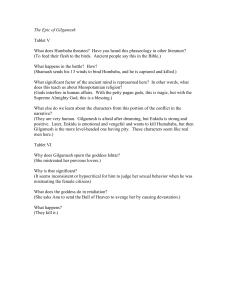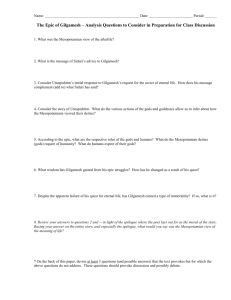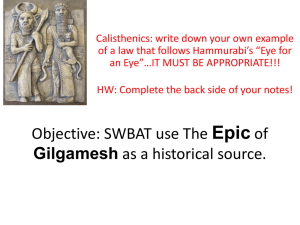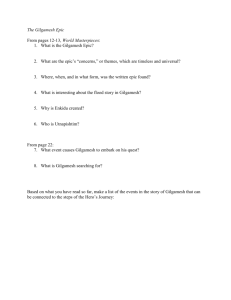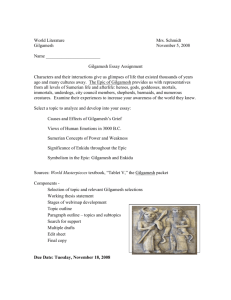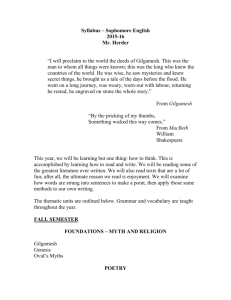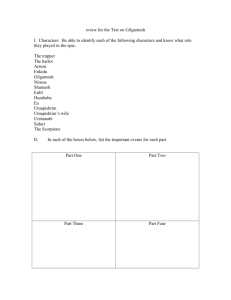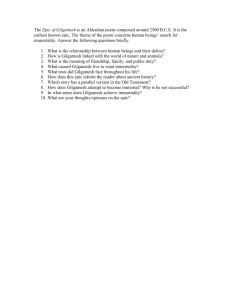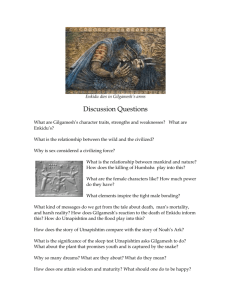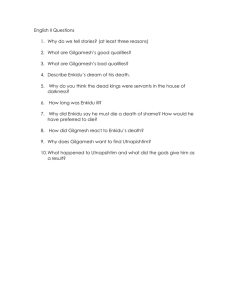Study Guide for Gilgameshcomp
advertisement
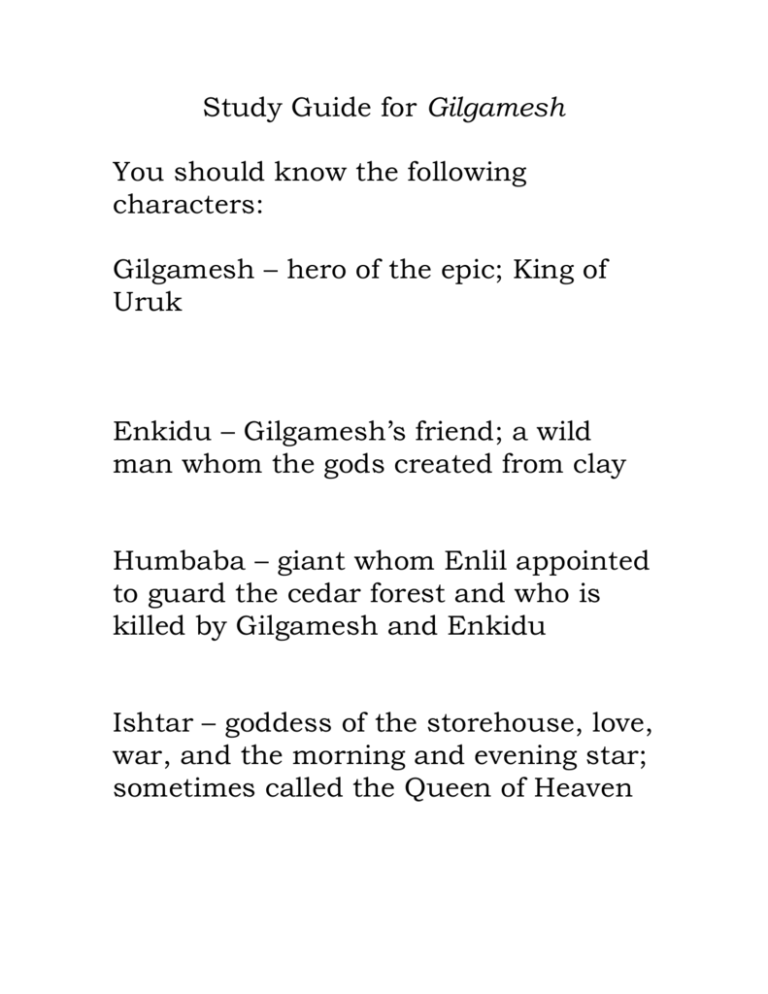
Study Guide for Gilgamesh You should know the following characters: Gilgamesh – hero of the epic; King of Uruk Enkidu – Gilgamesh’s friend; a wild man whom the gods created from clay Humbaba – giant whom Enlil appointed to guard the cedar forest and who is killed by Gilgamesh and Enkidu Ishtar – goddess of the storehouse, love, war, and the morning and evening star; sometimes called the Queen of Heaven Ea – also known as Enki – god of drinkable waters, fertility, artists and artisans, usually a god who acts favorably toward humans Enlil – god of the storm and wind as both a life-giving and destructive force Bull of Heaven – a symbol of draught and famine; this creature was sent by Anu in revenge for Gilgamesh’s insult to Ishtar, his daughter Utnapishtim – survivor of a flood sent by the gods to destroy humanity; granted immortality. Gilgamesh’s ancestor and a former King of Shurrupak Irkalla (Ereshkigal) – goddess and queen of the Underworld; sister of Ishtar and Shamash Shamash - also known as Utu, god of the Sun, justice, and law; brother of Ishtar You should also know the following terms: Hubris – an act of excessive pride; usually insulting to the gods or goddesses; an example is Gilgamesh rejecting and insulting Ishtar Epic – a long story, often told in verse, discussing heroes and gods Epic Hero – represents the ideal of a culture, often part divine, has an unusual birth, often of high status or importance, possesses remarkable abilities Anti-hero or ironic hero – a hero who lacks many of the qualities traditionally associated with a hero; often rejects or fails at the heroic quest Heroic Quest - This quest is often made up of several steps 1. the fall from a state of innocence to a state of experience 2. the hero undertakes a task or test to prove himself 3. often accompanied by an alter ego or double, who may die in place of the hero 4. goes on a quest or journey to find or achieve something 5. may have a descent into death or underworld 6. often ends with the nostos or homecoming Cuneiform – the language in which Gilgamesh was originally written, consisting of pictographs, often written on clay Mesopotamia – the setting of Gilgamesh; the name means the land between the two rivers; present day Iraq and parts of Syria. Study the culture quest worksheet to understand how this epic is a reflection of the culture from which it comes. You will have an essay question dealing with this topic.
